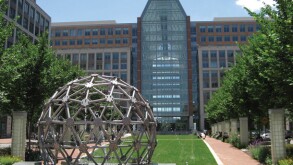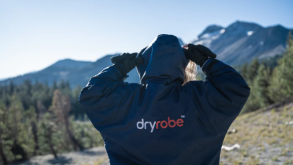China’s intellectual property (IP) judicial protection is entering a new era. On January 6 2025, the Supreme People’s Court (SPC) issued the Opinions of the Supreme People’s Court on Protecting Technological Innovation with High-Quality Trial Services, taking a problem-oriented and value-oriented approach. The opinions focus on prominent issues in trials related to technological innovation, and propose 25 policy measures across six aspects:
Overall requirements;
Strengthening the legal protection of technological innovation;
Protecting innovation entities;
Protecting innovative behaviours;
Building a legal and an international market environment for technological innovation; and
Constructing a judicial protection system.
The opinions propose many innovative measures in terms of the legal system, the institutional framework, and judicial rules to provide comprehensive judicial protection for technological innovation.
Article 19 of the opinions discusses how to coordinate the relationship between patents and standards. This article proposes handling standard-essential patent (SEP) infringement and SEP licensing fee disputes with a careful and skilful approach. This should be based on industry characteristics, standard property, and standard-setting procedures, determining the legal responsibilities of the parties in accordance with fair, reasonable, and non-discriminatory (FRAND) principles, so as to promote and improve the national standard system.
This article also proposes reasonably balancing the interests between patent holders and the public, encouraging the standardisation of patents to promote technological innovation, preventing standards from hindering technological innovation, and achieving mutual promotion and a virtuous cycle between standards and technological innovation. In this context, the SPC is providing a judicial policy for SEP cases to emphasise the balance of interests between the rights holders and implementers.
This tendency is also reflected in a recently released decision in an anti-anti-suit injunction (AASI) case.
The Huawei–Netgear SEP infringement case
On December 22 2024, the SPC made an AASI ruling on two SEP infringement lawsuits between Huawei, the appellant, and Netgear, the respondent. The SPC issued the following rulings:
During the trial and after the issuance of the judgment, Netgear shall not apply to courts, customs, or other administrative enforcement agencies in the US or other countries and regions to prohibit Huawei from proceeding with, or filing new, patent infringement lawsuits against Netgear regarding the patents involved in these two cases;
Netgear shall not apply to courts, customs, or other administrative enforcement agencies in the US or other countries and regions for the purpose of prohibiting Huawei from applying for enforcement of the judgments made by the courts of the People’s Republic of China in these two cases during the trial period and after the judgment is made;
If Netgear has already filed the above-mentioned application with courts, customs, or other administrative enforcement agencies in the US and other countries and regions, Netgear shall withdraw or suspend the application within 24 hours after receiving this ruling; and
Netgear shall not file any further adversarial applications against this ruling with courts, customs, or other administrative enforcement agencies in the US and other countries and regions.
If this ruling is violated, Netgear (Beijing) Network Technology Co., Ltd. and Netgear Company shall be fined RMB1 million per day from the date of violation, accumulating daily.
The reasonings of the SPC
Firstly, Huawei’s application for an AASI has a factual and legal basis. Huawei has won two SEP infringement lawsuits in Ji’nan Intermediate People’s Court against Netgear based on two Chinese patent rights at the first-instance trial. The Ji’nan court believes that Huawei has fulfilled its FRAND obligations in the licensing negotiations with Netgear, while Netgear has obvious faults, such as delaying negotiations, making unreasonable counter-offers, and not actively responding to Huawei’s negotiation offers during the licensing negotiation process.
Netgear has applied for a so-called anti-suit (enforcement) injunction from a US court, including the patent infringement lawsuits filed by Huawei in the Ji’nan court, in an attempt to obstruct Huawei’s normal litigation in Chinese courts, which clearly lacks justifiable reasons.
Secondly, if no AASI is taken, it will cause irreparable damage to Huawei’s legitimate rights and interests, or result in difficulties in moving forward the two cases or enforcing the judgment. Based on the facts ascertained in the first-instance judgments, it can be preliminarily judged that Netgear had obvious faults in the licensing negotiation, and was not a good-faith and trustworthy implementer. Huawei did not intentionally violate its FRAND obligations.
In this situation, Huawei’s legitimate rights and interests as a willing licensor should be fully protected by law. Netgear has applied for a so-called anti-suit (enforcement) injunction in the US court regarding these two lawsuits. Once approved, it will at least force Huawei to consider terminating its litigation in Chinese courts, including giving up the enforcement of Chinese court judgments in the future. Its legitimate rights and interests will obviously suffer irreparable damage.
Thirdly, if no AASI is taken, the damage caused to Huawei will significantly exceed the damage caused to the Netgear party by taking conduct preservation measures. As mentioned above, if no AASI is taken, Huawei will suffer obvious damages, which not only include physical rights damages such as long-term infringement of its patents by the Netgear party and inability to obtain normal profits in a timely manner but also improper obstruction of Huawei’s due process rights to advance the trial and application for judicial execution of the two cases in Chinese courts.
Allowing Huawei to apply for, and take, an AASI only imposes procedural obligations on Netgear for a certain period, and will not cause any additional losses to Netgear.
Fourthly, the adoption of an AASI in these two cases will not harm the public interest. Chinese courts have long held a very cautious attitude towards anti-suit injunctions and AASIs. This is the first AASI ruling made by Chinese courts in the IP field since the SPC issued the first SEP injunctions in 2020, between Conversant and Huawei. The ruling immediately sparked discussions across the industry.
Chen Jinchuan, a former vice president of the Beijing Intellectual Property Court, believes that “Chinese courts have indisputable jurisdiction over lawsuits involving two Chinese SEPs, and cannot refuse the jurisdiction based on the international comity or inconvenient litigation theory.”
Song Jian, a former presiding judge of the IP tribunal of Jiangsu High People’s Court, believes that “it can be expected that all lawsuits related to SEPs will revolve around the final global settlement between the two parties. Therefore, while the rights holders and implementers are conducting international parallel litigation, they should still negotiate and promote the settlement with the greatest good faith.”











